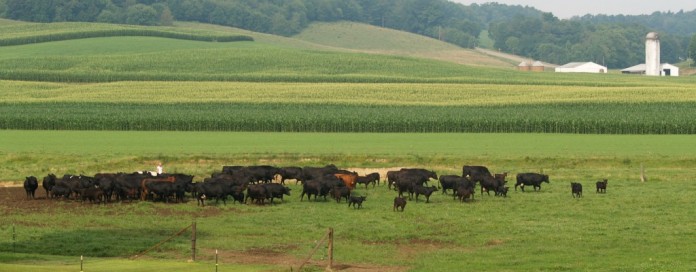In my neck of the woods, it seems we are off to another slow start to the cropping season. At the time I am writing, one report has indicated that corn acres planted are 14 percent behind in Ohio compared to last year, which for Ohio was a tough spring.
In the meantime I am attempting to get a few test plots in the field as I embark on my first summer as an Extension educator in Ohio and the weather sure is dragging this process out.
Once again, weather patterns remind us to exercise some patience and flexibility in our planning. We had an early warm spell that favored greenup in our pastures and then slid into an extended cool wet spell to slow us down.
Interpreting results
With tightening economic constraints on our farm operations, and with the fresh water resource issues we are facing, interpreting a soil test and making sure you have an understanding of how the results are derived remains important.
All of the soil labs available to us in our region are reliable and in my opinion it is the interpretation by the producer of the information provided by the lab that makes the difference.
Reading numbers
Recently, I sent identical samples to two different labs and the results came back with very similar numbers, which I was pleased to see. When approaching your soil test reports, start with your pH recommendation because pH is of particular importance to a nutrient like phosphorous (P).
Generally speaking, you can apply all the P needed but if your pH is too low the P will not be available to the crop. At OSU, we use buffer pH, which is an indicator of the potential acidity in the soil to generate a lime recommendation.
If you see two pH results on your soil test, the buffer pH is the value that attempts to put a number on the future characteristic of your field.
Phosphorus interpretation often determines how we apply other nutrients such as nitrogen, because the N is part of a product such as monoammonium phosphate or diammonium phosphate.
Soil levels
In grazing, P loss may be minimal, but if you are developing new stands, than the time to make a P application, if needed, is before planting the new stand. We take a P soil test level and determine what is needed in pounds of phosphate per acre.
Ask yourself these questions: Is P reported in ppm or pounds per acre? Is the analysis Bray P-1 or Mehlich 3? Am I in a P buildup program or a maintenance program? PPM is pounds per acre divided by two, which will easily throw off your recommendation if misinterpreted.
Bray P1 was originally used as P recommendations were developed, but in the course of time commercial laboratories shifted to the Mehlich 3 process.
Different information
Now we have information floating around in both forms so you need to pay attention to the analysis used because the results will differ. For example, an ideal P range for Bray P-1 in grasses is 15-30 ppm, which is equivalent to a 28-46 ppm Mehlich 3 range.
Resources such as the Tri-State Fertilizer recommendations in Ohio can make this process much easier and your soil lab can usually make any necessary conversions you require.
Managing nitrogen
Nitrogen is usually near the top of the list for management decisions in field crops, but N recommendations usually rely on a yield goal. In many of our pastures, we catch a break with this amendment because we include legumes in our forage mixes which fix nitrogen from the atmosphere.
Applying N to a mixed species pasture can cause two problems: excessive grass leaf growth will shade out legumes and legumes will utilize the amended N rather than fixing N from the atmosphere.
In pasture, legumes will often provide most if not all of the nitrogen required and light strategic applications of N may be all that is needed to jump start growth. Often pH, phosphorous, and nitrogen dominate the conversation in soil amendments.
Potassium is also a primary nutrient and on your soils tests the recommendation also depends on the cation exchange capacity (CEC). 125 to 200 ppm is a critical soil test level for potassium.
One risk with potassium is that plants will consume more than they actually need which can lead to nutrient imbalances in livestock. Secondary nutrients include calcium, magnesium and sulfur.
Other nutrients
Of these, calcium and magnesium are addressed with soil tests and any deficiency in the soil can often be met with the same liming materials used to correct pH. If sulfur or other micronutrients are suspected as cause for concern, foliar tissue testing should be considered.
Soil testing matters for your own production economics and for environmental considerations downstream. One report from the United States Geological Survey reports that pasture and range lands account for 37 percent of phosphorous delivered to the gulf of Mexico with the next leading source accounting for 25 percent (corn and soybean).
There are many new ideas (or renewed interest in old ideas) that are appearing in the conversation about soil health and management so always be on the lookout for information and resources that are vetted.
Finally, remember that if you plant new forage but do nothing to adjust your management practices, than in a few short years you will be right back where you started.













